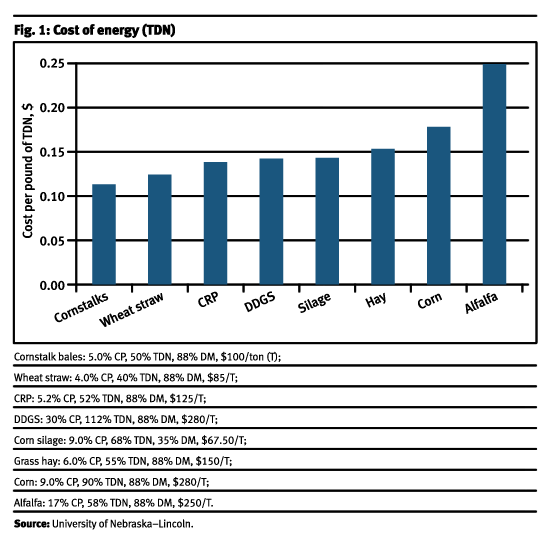
Rick Rasby
Ridin’ Herd
Make plans for no rain this spring.
You are probably tired of hearing about drought. It is on the minds of many cattle producers. The question is: How long will the drought last? Cow-calf producers are trying to decide whether to liquidate all or part of their herd if there is no rain this spring. The genetics they have built in their cow herd fit the resources with which they are asking that cow to produce.
EPDs have taken out some of the guesswork of combining breeds into a package that fits the ranch goals and objectives and are economical. With that said, it’s still a long process to rebuild the genetic component in a cow herd. Our pasture and range scientists are telling producers that even if we get rain this spring, it would be a good management strategy to not turn cows out for a good two to three weeks later than the normal spring turnout date.
Confinement feeding
Confinement feeding of beef cows is not a new concept for beef producers. Data say performance of calves and cows is similar whether they are confinement-fed or managed on pasture. Drylotting beef cows may be an alternative to liquidating all or part of the herd. It would be important to inquire with the state department of environmental quality to determine if permits are needed for this type of confined animal-feeding operation (CAFO).
Facilities and management
Pen size and lot space can be variable depending on soil type and drainage. A general recommendation is 500 to 800 square feet (sq. ft.) per pair. Plan on between 28 and 36 inches (in.) of bunk space per cow, depending on cow weight.
If the herd is a mix of young and old cows, it would be ideal to have separate pens for at least two groups. If separate pens are not possible, then hedge toward the higher number in regard to bunk space per cow. Diets for cows in drylot can contain a lot of forage and are bulky. Deep feedbunks will help limit waste.
Ration considerations
In drought situations, forage may be expensive and used in limited amounts in the diet. A rule of thumb would be to have at least 0.5% of the cow’s weight on a dry-matter (DM) basis as forage to keep the rumen healthy. As an example, if the average weight of the cow herd that is being drylotted is 1,200 pounds (lb.), then include at least 6 lb. per head per day (1,200 lb. × 0.005 = 6 lb.) of forage on a DM basis in the diet. If the forage is 85% dry matter, then feed 7.0 lb. per head per day (6 lb. per head day ÷ 0.85 = 7.06) as fed.
As the calf gets older, it will come to the bunk and eat. Diets need to be adjusted to account for the feed consumed by the calf. When the calf weighs 150-300 lb., estimate that it will consume about 2%-2.5% of its body weight on a DM basis. If the calf weighs 200 lb., it will eat 4-5 lb. of dry matter daily. If the ration is 70% dry matter (30% moisture/water), the calf will eat 6-7 lb. of the ration along with its mother.
Because corn is expensive and distillers’ grains are similar in price to corn, how other energy sources are secured will have an impact on the cost of the ration. Alfalfa, because of its cost and availability, will be difficult to include in the ration.
In Fig. 1, energy sources have been priced on a price-per-unit-of-energy (TDN) basis. To do this calculation, the amount of energy in each feed is determined on a 100% DM basis. Determining price per unit of energy at 100% DM basis removes the differences in moisture content of the feeds from the equation. The prices of the feedstuffs and nutrient composition used are described under the graph.

Cornstalks, wheat straw and Conservation Reserve Program (CRP) hay are all less than 14¢ per pound of TDN. Silage and dried distillers’ grains with solubles (DDGS) are less than 15¢ per pound of TDN, with drought-corn silage being only slightly higher than DDGS. Grass hay and corn are between 15.5¢ and 18¢ per pound of TDN. Alfalfa hay is more than 10¢ more expensive on a per-pound-of-TDN basis than cornstalks, wheat straw and CRP hay using this price- and nutrient-composition structure.
For lactating cows, it appears that a combination of cornstalks, wheat straw or CRP hay with either DDGS or corn silage would make the most economical rations. For the silage-plus-forage diet, a little alfalfa or a protein supplement would be needed based on the protein content of feeds used in the graph.
Final thoughts
Work with your extension person or nutritionist to design feeding programs that meet the animal’s nutrient needs and that are economical. This management strategy will take some pencil pushing to determine the economics. It will also take some projecting on your part as to what calves are worth and what it will cost for replacement females to be brought back into the herd if there is partial or total liquidation. Work with your accountant and banker so that you have mapped out and considered all the possible scenarios so that you can make the most-informed decision.
To help you determine price of a feed on a nutrient basis, there is an Excel spreadsheet that can be found at http://westcentral.unl.edu/web/westcentral/agecon3. Go to the middle of the page that comes up to find “The Feed Cost Cow-Q-Lator.” Click on the title to access the spreadsheet.
[Click here to go to the top of the page.]












